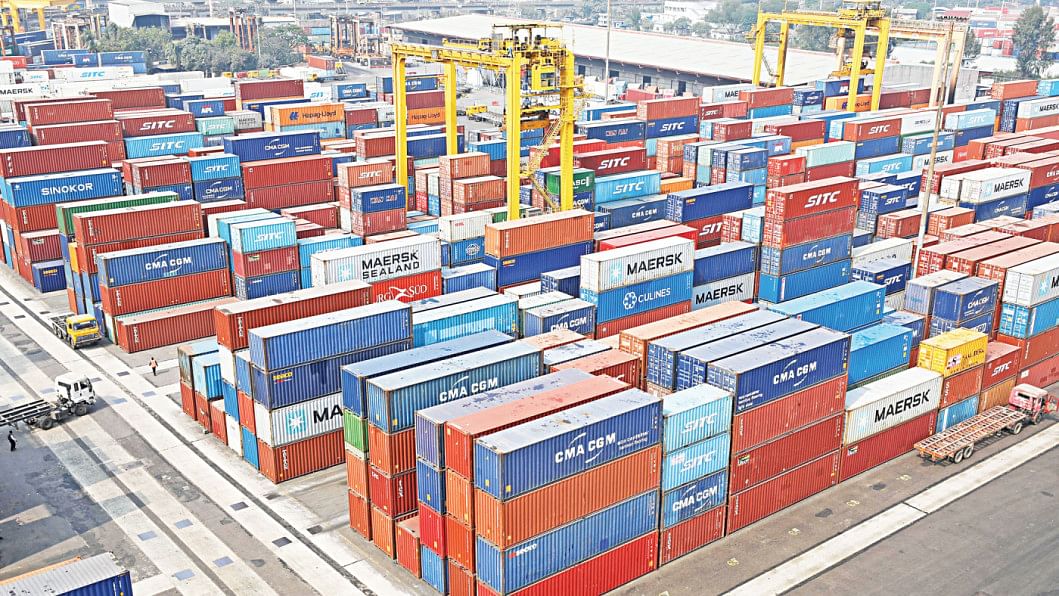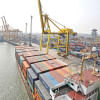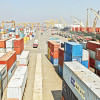Chattogram Port: From archaic anchorage to modern marvel
If you get a chance to take a stroll inside the present-day terminal of Chattogram Port, a world of mechanical marvels awaits. A row of gantry cranes lines the quay along the Karnaphuli riverbank, going skywards before almost melding into each other in the shape of an archway. The sight of these cranes gently swinging their mammoth arms and plucking containers from the decks of ships is a reminder of the wonders of a modern port.
But if the tides are on your side, you may witness the truly fascinating sight of a giant ship's arrival, humming rhythmically as it glides to a vacant quay. Most of the thirteen container jetties of the port remain perpetually busy, with 8,000 twenty-foot equivalent units (TEUs) being loaded and unloaded every day.
You can lose sight if you try to trace the adventurous routes that containers take from jetty points to seemingly boundless storage yards, especially as it is so easy to be distracted by the elegant, coordinated manoeuvres between vehicles, forklifts, straddle carriers, reach stackers and various other handling equipment.
The different yards of the port contain around 40,000 TEUs of containers, with more than 5,000 TEUs of goods being delivered from the port daily.
Chattogram Port, Bangladesh's premier seaport, handles roughly 90 percent of the South Asian country's annual $125 billion trade with the rest of the world. Today, it is the 67th busiest container port in the world and, in 2022, it handled 31.4 lakh TEUs of containers.

But the picture was different five decades ago when the port was in no position to handle containerised cargo. On March 22, 1977, history was created when a small steamship -- SS Tenacity -- berthed at the port for the first time, carrying with it only six TEUs of containers.
In the 1970s, there were only five or six shore cranes, each capable of lifting merely three tonnes of cargo. Now, 18 giant gantry cranes can lift and suspend a 40-tonne container without strain.
"Chattogram Port has undergone a radical transformation in the past few decades," said Rear Admiral Mohammad Sohail, chairman of Chittagong Port Authority (CPA).
It was only after the Liberation War that the port saw tremendous infrastructural development, starting with the renovation of the old jetties in the late 1970s.
As readymade garments entered the country's export basket in the late 1970s and export earnings quickly became the mainstay of the economy, the port's transformation became the need of the hour and, from the 1980s onwards, the port authority initiated structural changes.
The first two dedicated container jetties under the Chittagong Container Terminal were built in 1986, but it took more than two decades to add necessary container-handling equipment like quayside gantry cranes. In 2005, the first four cranes were installed at the terminal.
With steady growth in container traffic, the authorities planned to build another terminal, eventually completing the New Mooring Container Terminal (NCT) with five container jetties in 2007.
However, delays in deciding on the appointment of a private operator and installing the required modern equipment prevented the NCT from operating in full swing for the next eight years.
Syed M Arif, chairman of the Bangladesh Shipping Agents Association, said port users suffered a lot from frequent and prolonged container congestion at that time as container traffic increased significantly but the port had not developed proper facilities.
However, the NCT's construction had given business leaders the scope to raise their voices and seek the enhancement of facilities at the port to cope with the fast-rising volume of foreign trade.
After handling a mere 6 TEUs in 1977, container throughput reached 1 million TEUs in 2008. That figure doubled to 2 million TEUs in 2015. The port reached the milestone of 3 million TEUs in 2019.
Since 2012, the CPA started planning additional expansion projects, including the conversion of a part of the general cargo berth (GCB) into a multi-purpose terminal named Karnaphuli Container Terminal, Patenga Container Terminal, the development of the Laldia multipurpose terminal and the Bay Terminal mega-project. The GCB conversion plan was later cancelled, while the rest were significantly delayed.
The cabinet committee approved the Laldia project in 2013, with initial plans to start developing it by 2015. But it was only recently that a sister concern of Danish shipping giant Maersk Group proposed to build the terminal and the government started fresh talks.
The groundbreaking of the Patenga terminal was held in September 2017, with a plan to complete construction by December 2019. The construction was finally completed in June 2022, due to the Covid-19 pandemic and other complexities.

In December last year, the CPA reached an agreement with Saudi firm RSGTI to equip and operate the Patenga terminal, but it is scheduled to take two more years for the installation of gantry cranes, which means operations at the port will be limited until then.
The Bay Terminal project, comprising three terminals, was also delayed. In August 2021, State Minister for Shipping Khalid Mahmud Chowdhury expressed hope that the first of the three terminals would be completed by 2024. The start of operational activities is now expected to begin in 2026.
Despite such delays, however, the port has not faced much of a logjam as the country's foreign trade has also experienced a slowdown due to the lingering impacts of the pandemic, the Russia-Ukraine War, the Middle East Crisis and the Red Sea impasse.
Mahbubul Alam, president of the Federation of Bangladesh Chambers of Commerce and Industry, says the prevailing slowdown in foreign trade is a challenge but has given some time to the port authorities to complete the projects.
He stresses the need to expedite projects and implement them on time since the economy may rebound in the coming days.
CPA Chairman Sohail, however, said all the projects have gained momentum and progressed significantly in recent times. "Major development work is about to start this year."
He said the construction of the multi-purpose terminal, one of the three terminals under the Bay Terminal, would start by the middle of 2024.

 For all latest news, follow The Daily Star's Google News channel.
For all latest news, follow The Daily Star's Google News channel. 






Comments